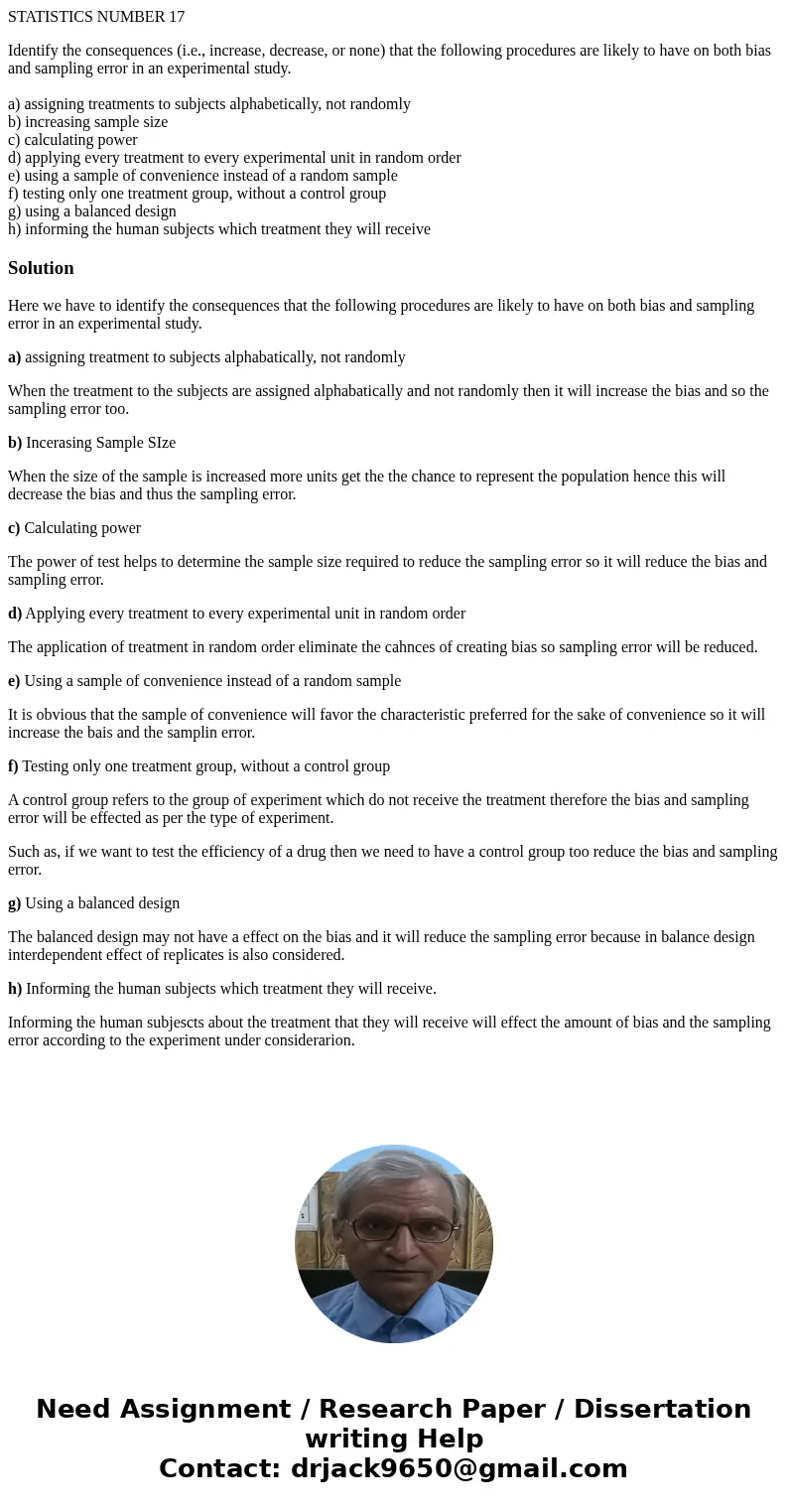STATISTICS NUMBER 17 Identify the consequences ie increase d
STATISTICS NUMBER 17
Identify the consequences (i.e., increase, decrease, or none) that the following procedures are likely to have on both bias and sampling error in an experimental study.
a) assigning treatments to subjects alphabetically, not randomly
b) increasing sample size
c) calculating power
d) applying every treatment to every experimental unit in random order
e) using a sample of convenience instead of a random sample
f) testing only one treatment group, without a control group
g) using a balanced design
h) informing the human subjects which treatment they will receive
Solution
Here we have to identify the consequences that the following procedures are likely to have on both bias and sampling error in an experimental study.
a) assigning treatment to subjects alphabatically, not randomly
When the treatment to the subjects are assigned alphabatically and not randomly then it will increase the bias and so the sampling error too.
b) Incerasing Sample SIze
When the size of the sample is increased more units get the the chance to represent the population hence this will decrease the bias and thus the sampling error.
c) Calculating power
The power of test helps to determine the sample size required to reduce the sampling error so it will reduce the bias and sampling error.
d) Applying every treatment to every experimental unit in random order
The application of treatment in random order eliminate the cahnces of creating bias so sampling error will be reduced.
e) Using a sample of convenience instead of a random sample
It is obvious that the sample of convenience will favor the characteristic preferred for the sake of convenience so it will increase the bais and the samplin error.
f) Testing only one treatment group, without a control group
A control group refers to the group of experiment which do not receive the treatment therefore the bias and sampling error will be effected as per the type of experiment.
Such as, if we want to test the efficiency of a drug then we need to have a control group too reduce the bias and sampling error.
g) Using a balanced design
The balanced design may not have a effect on the bias and it will reduce the sampling error because in balance design interdependent effect of replicates is also considered.
h) Informing the human subjects which treatment they will receive.
Informing the human subjescts about the treatment that they will receive will effect the amount of bias and the sampling error according to the experiment under considerarion.

 Homework Sourse
Homework Sourse